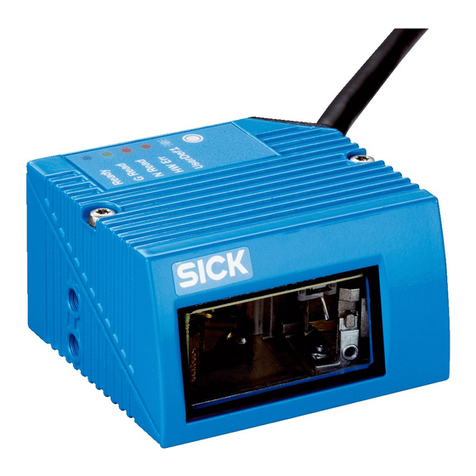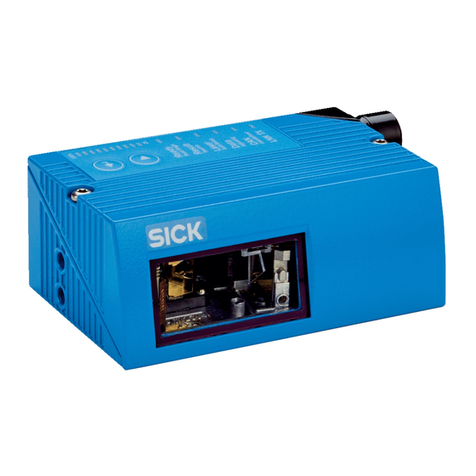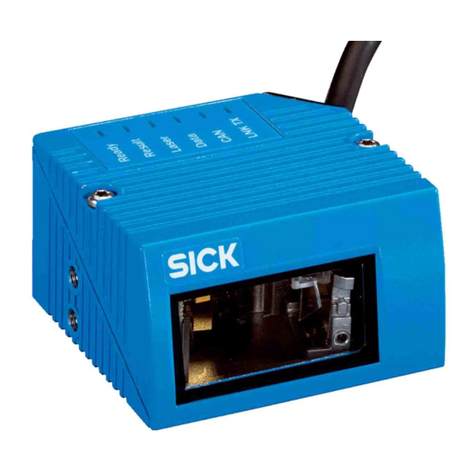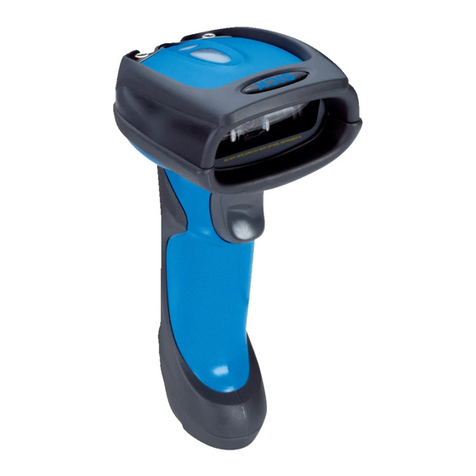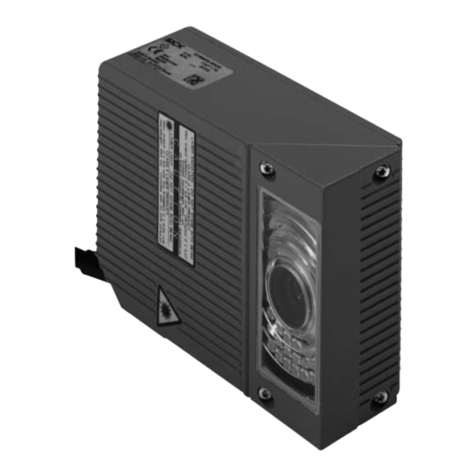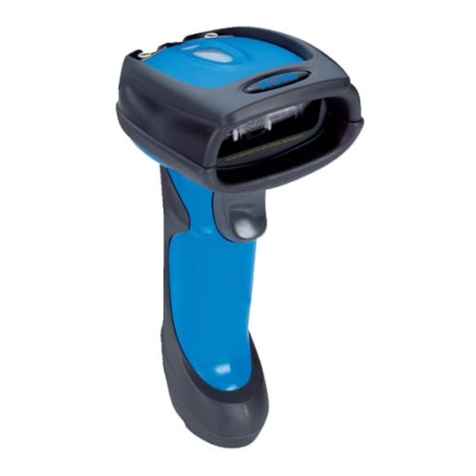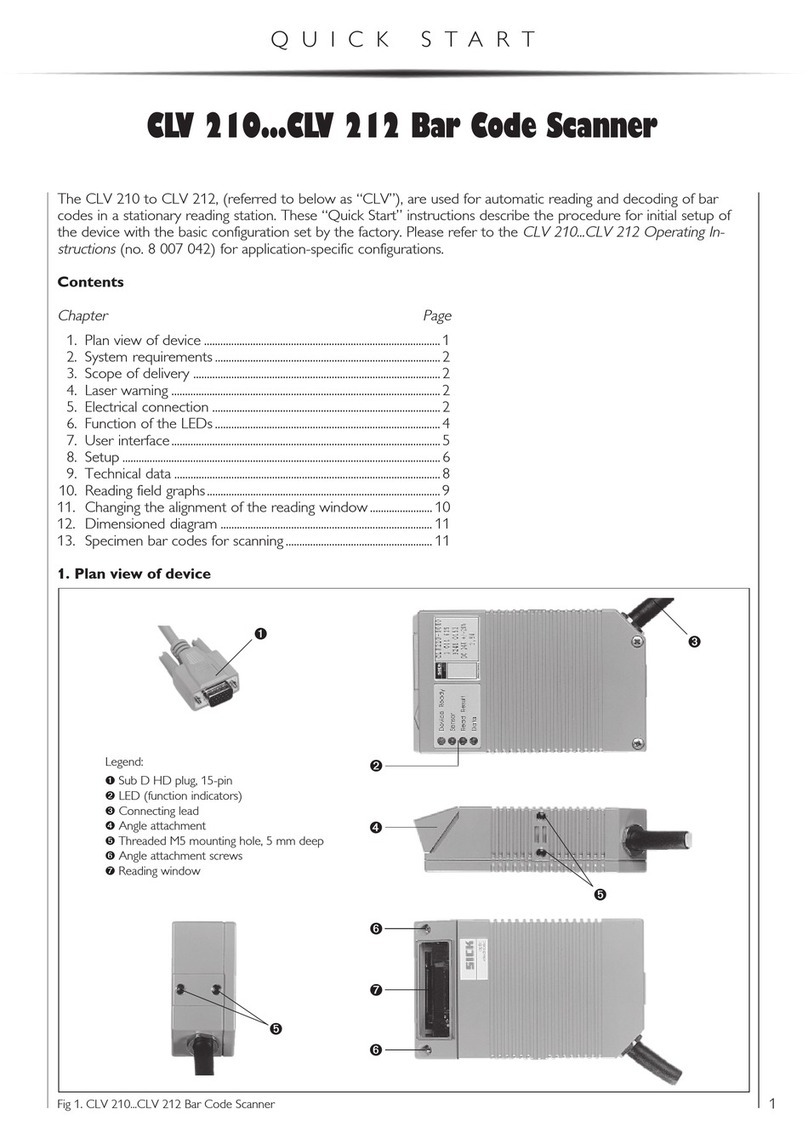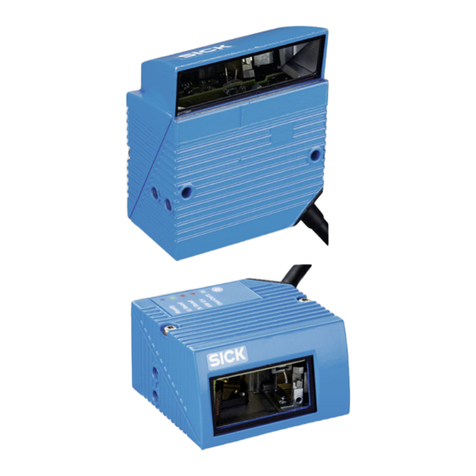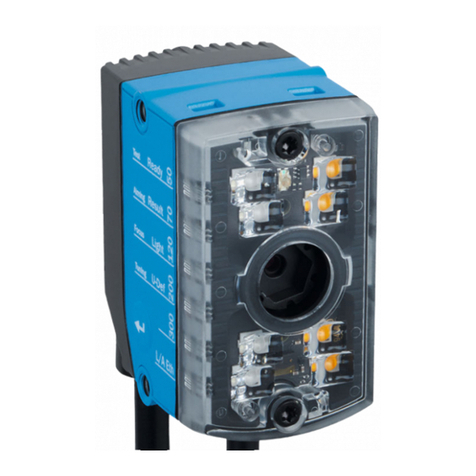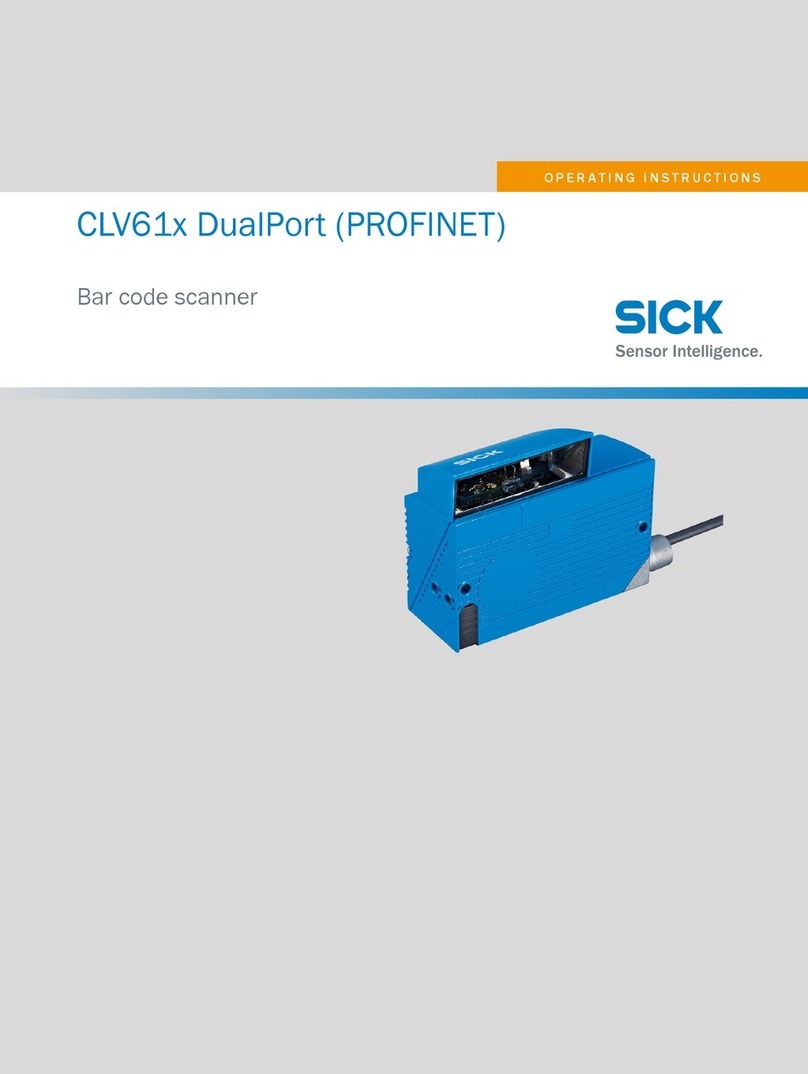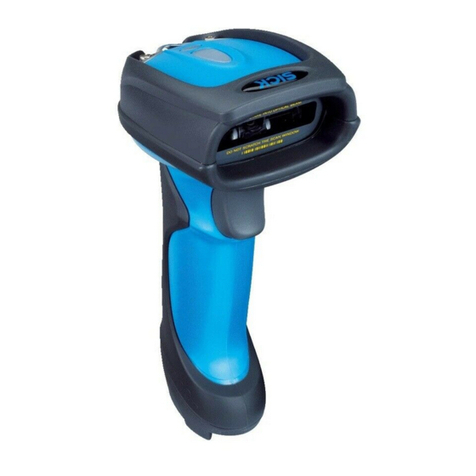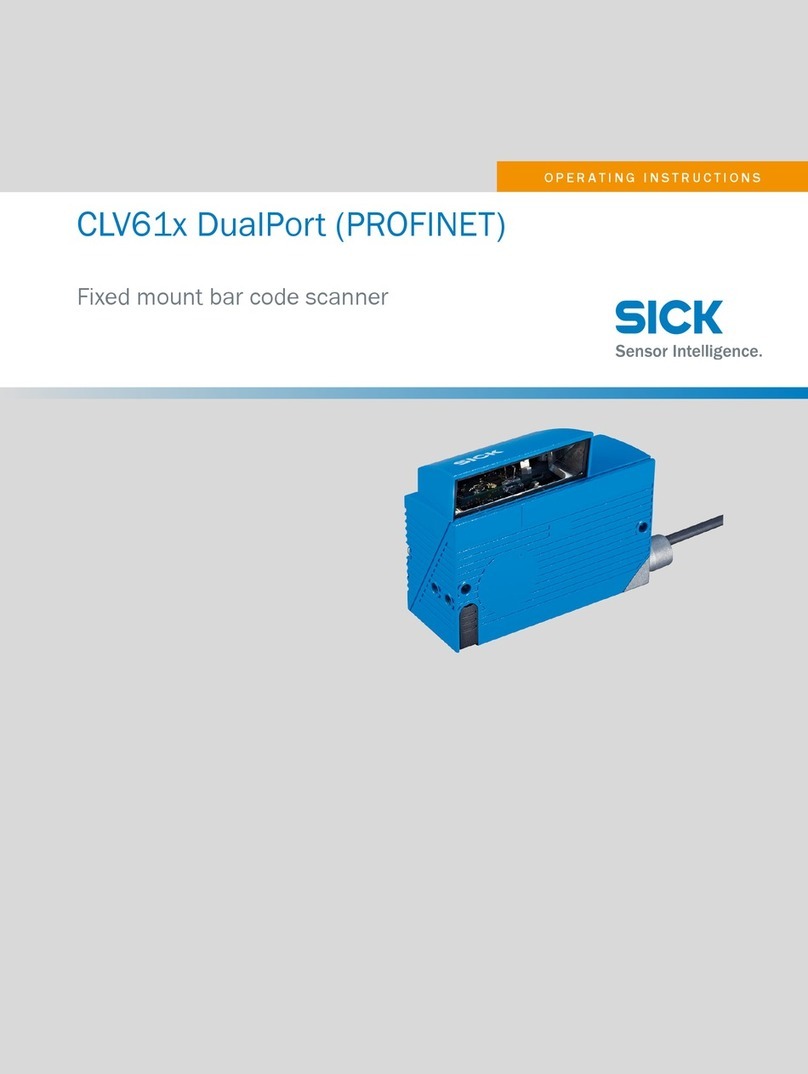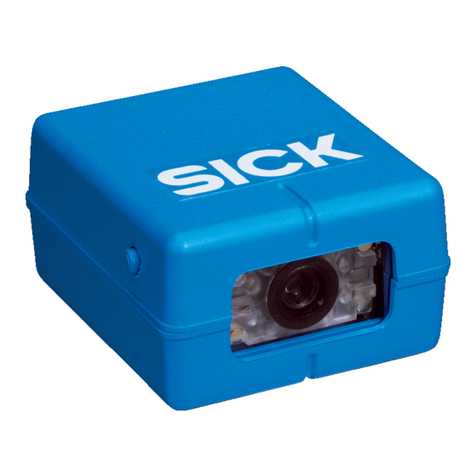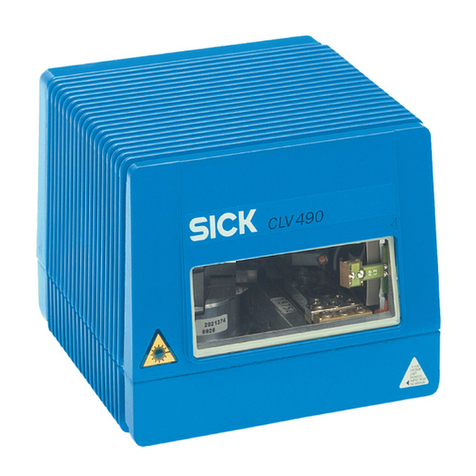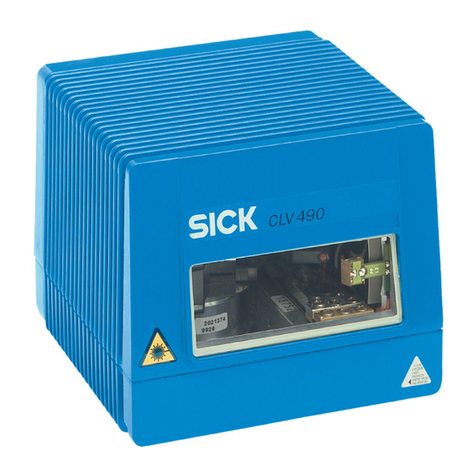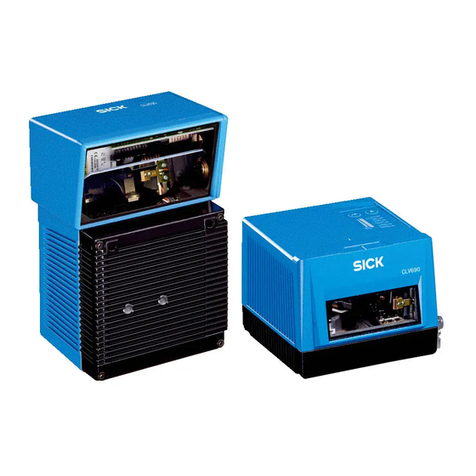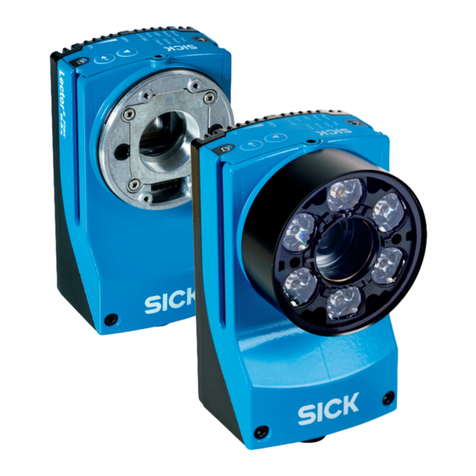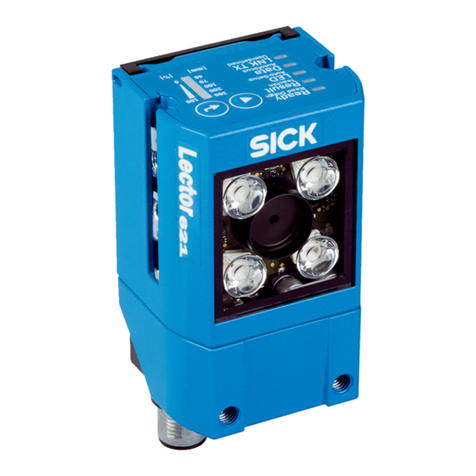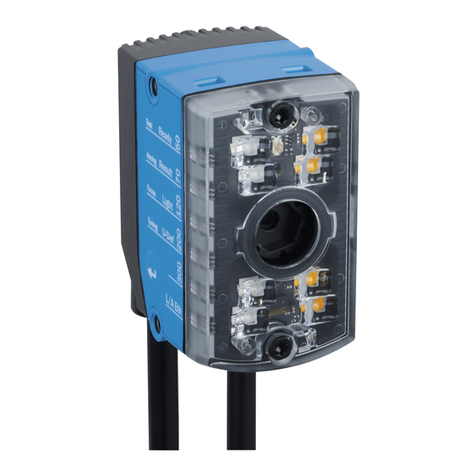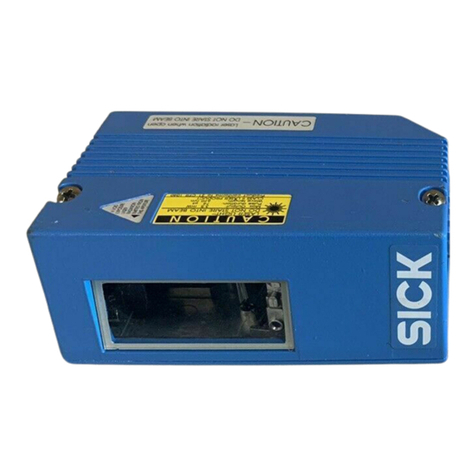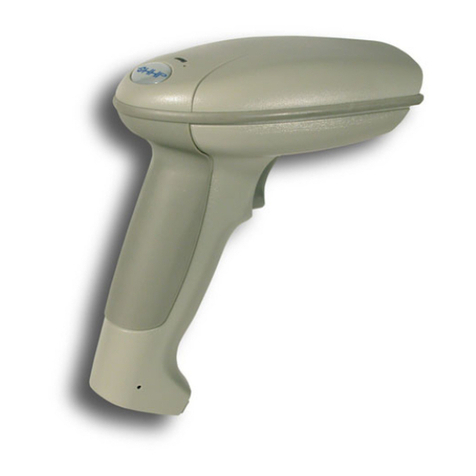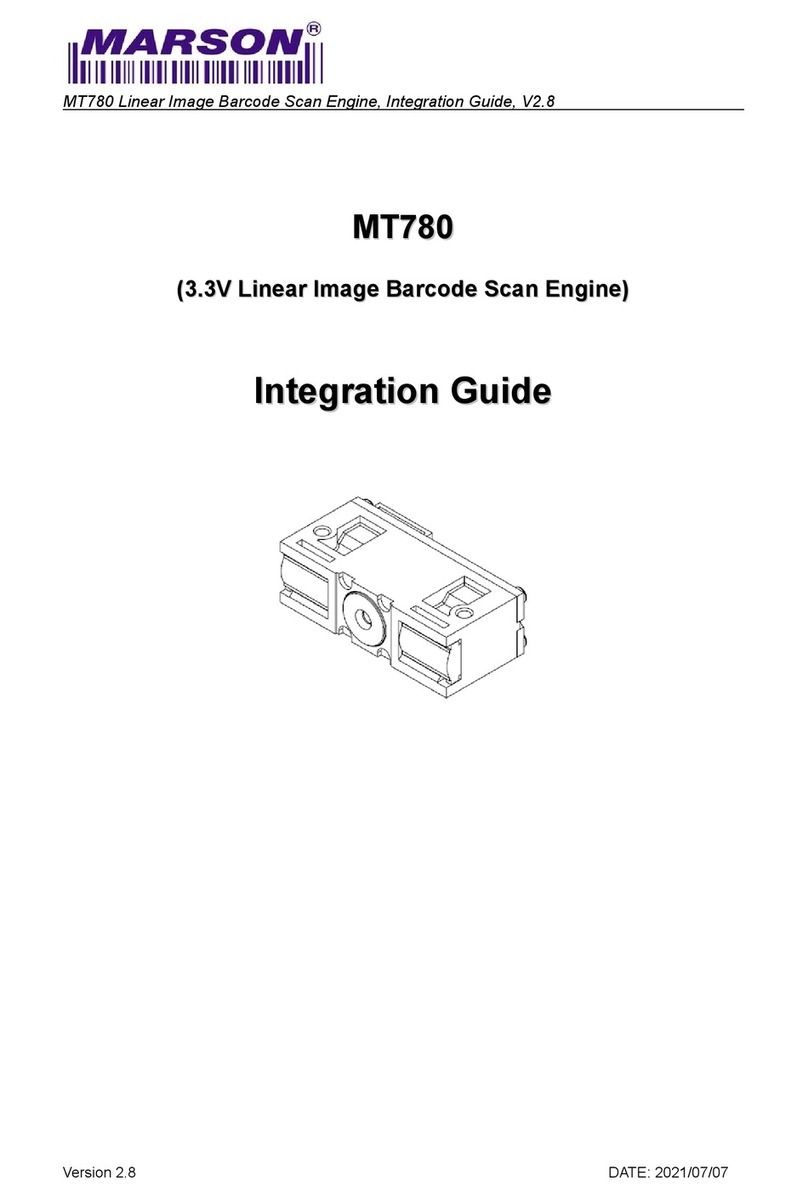
Operating Instructions
CLV640 Bar Code Scanner
Contents
8011975/0000/2008-04-14 ©SICK AG · Division Auto Ident · Germany · All rights reserved 3
Table of contents
Figures and Tables............................................................................................................ 5
Abbreviations..................................................................................................... 5
Tables................................................................................................................. 6
Figures ............................................................................................................... 7
1 Notes on this document.................................................................................................11
1.1 Purpose............................................................................................................11
1.2 Target group ....................................................................................................11
1.3 Depth of information.......................................................................................11
1.4 Used symbols ..................................................................................................12
2 Safety information ..........................................................................................................13
2.1 Authorised users .............................................................................................13
2.2 Intended use ...................................................................................................14
2.3 General safety precautions and protection measures .................................14
2.4 Quick stop and quick restart ..........................................................................17
2.5 Environmental information.............................................................................18
3 Quick-Start .......................................................................................................................19
3.1 Preparing the bar code scanner for the quick start......................................19
3.2 Establishing connection with the bar code scanner.....................................19
3.3 Performing the reading...................................................................................20
4 Product description.........................................................................................................23
4.1 Setting up the bar code scanner....................................................................23
4.2 Included in delivery .........................................................................................26
4.3 Device versions ...............................................................................................27
4.4 System requirements......................................................................................27
4.5 Product features and functions (overview) ...................................................28
4.6 Bar code scanner methods of operation.......................................................29
4.7 Indicators and control elements ....................................................................36
5 Installation .......................................................................................................................41
5.1 Overview of installation sequences ...............................................................41
5.2 Installation preparations ................................................................................41
5.3 Installation location ........................................................................................43
5.4 Installation of the bar code scanner..............................................................48
5.5 Installing external components......................................................................49
5.6 Removing the bar code scanner ....................................................................50
6 Electrical installation ......................................................................................................51
6.1 Overview of installation sequence.................................................................51
6.2 Electrical installation preparation..................................................................51
6.3 Electrical connections and cables .................................................................52
6.4 Performing electrical installation ...................................................................56
6.5 Pin assignment and wire colour assignment of the assembled cables......62
7 Startup and configuration..............................................................................................65
7.1 Overview of the startup procedure ................................................................65
7.2 SOPAS-ET configuration software ..................................................................65
7.3 Establish communication with the bar code scanner ..................................66
7.4 First startup .....................................................................................................68
7.5 Default setting.................................................................................................70
7.6 Adjusting the bar code scanner .....................................................................71
8 Maintenance ....................................................................................................................73
8.1 Maintenance during operation.......................................................................73
8.2 Cleaning the bar code scanner ......................................................................73
8.3 Cleaning further optical effective surfaces ...................................................76
8.4 Checking the incremental encoder................................................................76
8.5 Replacing a bar code scanner........................................................................76
